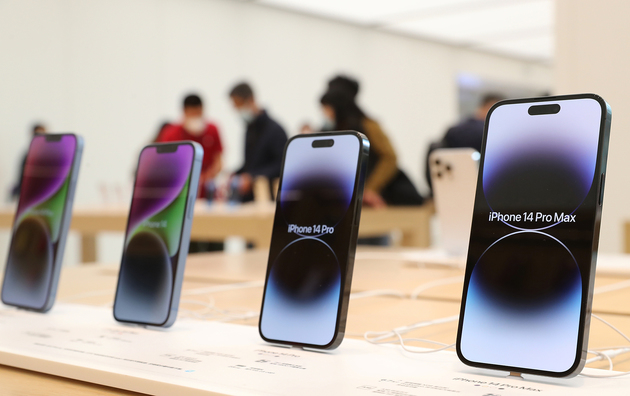
Photo/VCG
1. OpenAI launches Converge 2 accelerator program
OpenAI founder Sam Altman announced on Thursday that OpenAI's venture fund has launched the Converge 2 accelerator program. The program is designed for outstanding engineers, designers, researchers, and product developers who are using AI to reimagine the world. Through technical talks, social events, and conversations with leading practitioners, OpenAI will explore the most important opportunities and challenges in building at the forefront of AI. In addition, participants will receive a $1 million investment from OpenAI's venture fund and join its creator community.
Commentary:
Through this program, OpenAI aims to cultivate more AI innovators and entrepreneurs, accelerating the development and application of AI. This is beneficial for promoting competition and diversity in the AI field, and it also helps OpenAI to expand its influence and partnerships.
2. Google launches MusicFX AI music creation tool: Generate a song with just a sentence
On Thursday, Google launched the AI music creation tool "MusicFX." With just a few sentences, users can create original music works. Google pointed out in the introduction that this tool called "MusicFX" combines Google's previously released MusicLM model and DeepMind's watermark technology SynthID to identify whether they are made by AI in the future, which can to some extent address copyright issues.
Commentary:
This is a fun and convenient tool for music lovers and creators, and it also brings new possibilities and challenges to the music industry. Google also considers the issue of copyright protection, which reflects its respect and support for music creators.
3. Apple starts collecting map-related data
Apple recently released support documentation stating that the company has begun collecting map-related data since the release of iOS 17.2 to improve augmented reality positioning functionality. Apple said the purpose of this data collection is to improve the speed and accuracy of augmented reality features in the Apple Maps app.
Commentary:
This shows its ambition and commitment to the augmented reality field. Augmented reality is one of the important technology trends of the future, which can provide users with a richer and more realistic experience.
4. Moderna and Merck's jointly developed vaccine significantly reduces the risk of skin cancer recurrence
In a study, a personalized vaccine developed by Merck and Moderna showed promising new results, namely that this vaccine significantly increased the likelihood that patients would not experience skin cancer again in a three-year observation period. According to reports, the two companies said on Thursday that patients with severe melanoma who received the vaccine as well as Merck's cancer drug Keytruda had a 49% lower risk of death or cancer recurrence than patients who only received Keytruda.
Commentary:
The development of this vaccine by Moderna and Merck is of great value for improving the quality of life and life expectancy of skin cancer patients, and it also provides new ideas and hope for the treatment of other types of cancer. This also reflects the importance and potential of vaccine technology in the medical field.
5. TSMC says 1.4-nanometer manufacturing technology development is progressing smoothly
TSMC revealed on Thursday at the IEEE International Electron Device Meeting (IEDM)'s Future Logic Session that the development of its 1.4-nanometer manufacturing technology is progressing smoothly. TSMC also reiterated that mass production using its 2-nanometer manufacturing process is expected to be achieved in 2025. TSMC Chairman Liu Deyin said that, given the uncertainties such as high inflation and rising costs, he expects there will still be uncertainties next year, but thanks to the rapid development of AI applications, he believes next year will be a year full of opportunities and a year of healthy growth for the semiconductor market.
Commentary:
TSMC's 1.4-nanometer manufacturing technology is a world-leading innovation that will further improve the performance and energy efficiency of chips, while reducing costs and power consumption. This will strengthen TSMC's competitive advantage in the semiconductor foundry market and attract more customers and orders.
6. Intel launches AI chips for PCs and data centers
On Thursday, Eastern Time (December 14), Intel held a new product launch event called “AI Everywhere” and launched artificial intelligence (AI) chips for personal computers and data centers, hoping to gain a larger share in the booming AI hardware market. Intel said that servers based on the new Xeon processor will be widely available in the first quarter of next year. The new processor improves performance and memory while consuming less power. Xeon is also the only mainstream data center processor with built-in AI acceleration capabilities.
Comment: Intel faces fierce challenges from competitors such as Nvidia, Google, and Amazon in the field of AI chips. Launching the new Xeon processor is an important move for it to strengthen its advantage in the data center market. Intel’s new chip not only enhances AI computing capabilities, but also reduces costs and power consumption, which helps attract more cloud service providers and enterprise customers.
7. Amazon announces Kuiper satellites will be equipped with “laser inter-satellite link” feature
Amazon said on Thursday that two prototype satellites launched in October this year have completed the verification of the “laser inter-satellite link” (OISLs) technology and will be equipped with this breakthrough key technology on the new satellites to be launched in early next year. Amazon said that in the prototype test, the two satellites achieved a data transfer speed of 100GB/second at a distance of 621 miles (1000 kilometers) throughout the process.
Comment: With the laser inter-satellite link technology, Amazon can achieve high-speed data transmission between satellites, improve network reliability and coverage, and reduce dependence on ground stations.
Disclaimer: The content and data of this article are for reference only and do not constitute investment advice. Verify before using.


 川公网安备 51019002001991号
川公网安备 51019002001991号





